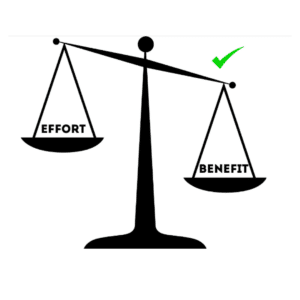Consider a typical mid-level executive who starts their day at 9 am and doesn’t shut their laptop until late at night.
They believe this relentless grind is what helped them rise through the ranks. Yet, now they often feel exhausted, unsatisfied, and unable to do high impact work.
This is the story of most mid to senior level professionals today. It highlights a fundamental misunderstanding of what true productivity should look like.
Mistake 1: The squeeze
The first mistake is thinking that productivity is a marathon session of ploughing through tasks, where the aim is to do as much as possible, as quickly as possible.
This perpetual busyness might work temporarily, but it is unsustainable. When you buy into the belief that productivity is about squeezing the last drop out of you, it becomes ‘toxic productivity.’
True productivity isn’t about working yourself to the bone, but about working effectively.
Mistake 2: Reducing productivity to just time management
Thanks to the many productivity gurus online, the erroneous belief that productivity is just about managing your time has spread like a virus.
Managing your time is crucial, but it’s only a small part of the equation. Real productivity also involves reducing cognitive overload, prioritizing tasks, focusing deeply, and addressing the emotional aspects of our work.
Mistake 3: The hack
The relentless search for the next quick productivity hack is the third mistake.
Tips and tricks help, but they cannot be a substitute for a comprehensive, sustainable system. Downloading the latest productivity app or an elaborate Notion template only goes so far.
The fundamental error here is treating the tool or hack as a comprehensive solution. They can offer temporary relief or organization, but they don’t tackle the underlying habits, mindsets, and systemic issues that significantly influence productivity.
True productivity demands a holistic approach that incorporates these tools and hacks into a wider strategy, which you then customize to meet your needs and objectives.
We also go wrong with execution
In addition to the above thinking mistakes, you are likely going wrong with execution as well.
Unnecessary complexity
Your personal productivity problem seems complex, so you choose complex solutions that are hard to maintain.
How can you tell whether a productivity system is effective or not? A productivity system is effective when it can lighten your load, not add to it.
Your goal is to find a balance where the system’s upkeep is outweighed by its benefits. If the effort required to maintain the system vs its benefits is a net positive, then you’re more likely to stick with it.
Illustration: Net positive system load is when you derive more benefits than the effort you put in.
Prioritizing novelty over fundamentals
It’s easy to get sidetracked by esoteric concepts like biorhythms or energy center alignment while overlooking fundamental aspects of productivity like focus and prioritization.
These basics are often overlooked for two reasons:
- They seem way too simple
- The obstacles to implementing them are non-trivial, but not immediately obvious.
For example, why can’t you focus on your task without getting distracted by a ping on your smartphone? The challenge here is not about simply deciding to focus. It’s about understanding and managing your brain’s tendency to wander.
Disregarding cumulative impact
Improving productivity is never the result of a single big change; rather, it is the cumulative impact of small adjustments.
Each element brings a small positive delta – whether it’s engaging in deep work, prioritizing tasks effectively, reducing cognitive load, or establishing systems that reward you, each one contributes incrementally.
When you attempt to reduce a multi variable problem to a single variable one, you tend to lose out on the nuances and richness of the solution.
It’s not productivity OR pleasure
In our minds, we believe that productivity and enjoyment are mutually exclusive. If anything is to blame for this misconception, it is our collective glorification of the hustle and grind culture. For most of us, work is a punishing drag and we somehow have to get through it.
But the fact is, there is a lot of joy to be found in the meditative focus of deep work. There is tranquil satisfaction in not jumping around from task to task like a monkey.
If you design it the right way, the calm collectedness that you experience during meditation can also be experienced at work. Recognizing and cultivating joy in your work will transform your approach to productivity.
Ignoring emotions
A system that doesn’t account for emotional regulation is incomplete. Emotions profoundly affect productivity – from anxiety that wrecks productivity, to joy and satisfaction of a job well done that propels us forward.
No matter how powerful the system, ultimately it is a live human being that executes the system, not a robot. We will always feel different emotions – small anxieties to full blown panic attacks – we must learn how to regulate all of them to make any system work.
In the absence of emotional regulation, we stay frozen, unable to make progress. Just having a system alone is not sufficient.
A system that works
A truly effective productivity system is more than a task manager – it’s a comprehensive approach that incorporates joy and emotional well-being, while also handling the essential minutiae of work.
Such a system is not a temporary fix, but a sustainable routine that seamlessly integrates into your daily life.
We have to rethink productivity. Instead of last-minute scrambles to meet deadlines, imagine making it a sustainable part of our daily routine, allowing us to consistently achieve without the looming pressure of deadlines.

